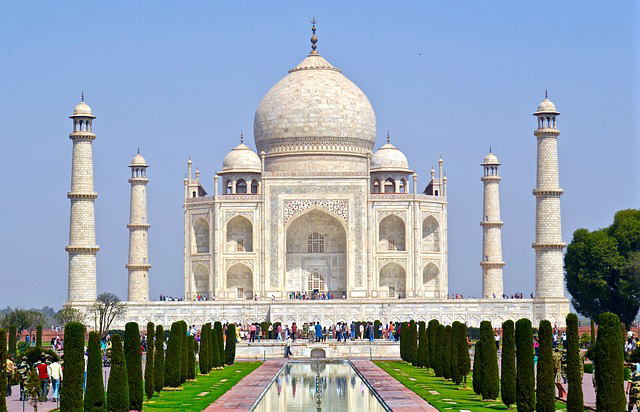Love 🥰
*Love's Perfect Tribute.*
*✍️ ANJAR ALAM*
The Taj Mahal is one of the most iconic landmarks of India and a UNESCO World Heritage Site. Recently, it has also been chosen as one of the New Seven Wonders of the World.
This white marble mausoleum mosque was constructed by the Mughal Emperor Shah Jahan in memory of his beloved consort, in the city of Agra, Uttar Pradesh, India, between 1631 and 1648.
It comprises a temple, bell tower, minaret and pond, all made of pure white marble, adorned with intricate inlays of glass and onyx, and holds immense artistic value. The Taj Mahal stands as a perfect example of Indian Muslim art, a timeless masterpiece and the "Pearl of India" that has captured the hearts of visitors worldwide.
Built as a symbol of undying love, the monument has become a testament to the enduring power of love.
While some may argue that Shah Jahan was a tyrant who built the Taj Mahal for his own self-aggrandizement, it is widely believed that it was a labour of love that led to its construction.
Though the tales of the blood and lives lost in its construction may have a degree of truth, what remains undiminished is the magnificence of the Taj Mahal, and the powerful emotion it embodies.
A visit to the Taj Mahal in the summer can be a memorable experience, albeit a daunting one.
The Taj Mahal stands on a four-storey marble plinth and is surrounded by canals and pools.
Visitors must walk barefoot from the entrance gates to the back of the tomb, where they have to remove their shoes as a sign of respect, even if they are foreign dignitaries. However, in the hot summer months, when temperatures can soar to over 47°C, the platform can become unbearably hot.
Visitors are often seen hopping and dancing on the marble as they make their way to the main building, trying to avoid the heat of the surface.
The Taj Mahal is not just a mausoleum; it also includes a mosque on either side of the main body of the Taj Mahal.
Built of red sandstone and topped with a typical white dome, these two structures were designed to maintain the symmetry of the entire Taj Mahal architecture.
The complex is a masterpiece of Islamic art, combining Mughal and Persian styles to create a unique and captivating monument.
The Taj Mahal is a magnificent monument that speaks volumes about the love, craftsmanship, and artistic prowess of the Mughal era.
Despite the controversies surrounding its construction, it remains one of the most stunning examples of Islamic architecture in the world.
Its serene beauty and majesty leave a lasting impression on all who visit it, and it continues to inspire awe and admiration among visitors from all over the world.
One of the interesting aspects of the Taj Mahal is its changing appearance throughout the day.
The white marble structure reflects the changing colors of the sky, appearing pink at dawn, milky white during the day, and golden in the evening light.
Visitors often spend hours admiring the intricate details of the marble inlays and the delicate carvings that adorn the walls and ceilings of the monument.
In addition to its visual appeal, the Taj Mahal has also inspired many poets and writers, who have penned odes to its beauty and the eternal love that it represents.
It remains an enduring symbol of India's rich cultural heritage and attracts millions of visitors every year.



Comments
Post a Comment